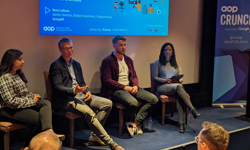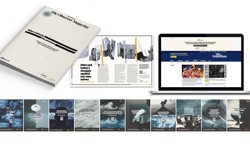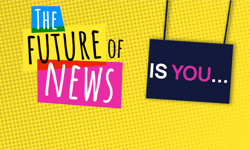Is design a marketing issue? Most definitely. Abysmal design can alienate potential customers just as stunning design can attract them and hold their attention. In a mature market such as print most of the design no-nos were ironed out decades ago and good design is often taken for granted.
Compared to print, the online experience is still in its infancy and design issues are a fundamental factor in the success or failure of a web site. My definition of design success is holding the attention of visitors once they have found your site and facilitating their journey around the site. There are three factors that make web design so important. Firstly, in most cases visitors will have a choice of information sources; they don’t have to use you. Secondly people online have virtually no patience. Thirdly promiscuity is high and loyalty low. All this means that if your site hinders, irritates or confuses visitors in any shape or form they will simply click away. You’ve lost them.
Just say no
Often the reason for web sites failing to deliver can be traced back to the planning stages. Too often it’s a case of too many chiefs and not enough planning. One of Mark’s key themes was "keep it simple". Design decisions should be assigned to one person and that person’s stock response when faced with colleagues’ suggestions about what should go on the site should be "no". Clarity of purpose and the avoidance of clutter are paramount. Let the various interested parties work hard to justify the inclusion of their pet feature. Talk to your customers at the start of the process, during the process and after the process – in fact don’t stop talking to them. If you go to the trouble and expense of soliciting third party advice, then make sure you listen to it and, last but not least, write a proper brief. What do you want this site to achieve? All design issues flow from there.
In a nutshell your web site should be visually appealing, crystal clear, easy to get around, carefully crafted, closely monitored and properly structured.
Clarity
Use the space wisely and avoid clutter. An excess of distracting movement and garish images will just confuse the visitor. Make the site easy to read. Your visitor should not be squinting at the screen trying to decipher the blue text that you have cleverly placed against a blue background. Try to avoid an excess of links especially within the body of text. On a more contentious note, beware overlay ads. Remember that visitors are coming to your site for the content not the ads.
Navigation
Web users are impatient. Your site should be designed to enable the visitor to get to where he wants to be with the minimum of clicks, fuss and bother. This means not constructing artificial barriers (splash screens, opening pages with "click here to enter") and not asking the visitor to decipher cryptic navigational devices. Don’t make the site overwhelming so that the user can’t see the wood for the trees and don’t make it so underwhelming that he is unsure what the site offers or what he needs to do.
Maintain standards
Often lower standard seem to apply to the web. Pictures go on the web which noone would ever allow to be used for print. Text which is routinely proofed and re-proofed for print products is flung on the web with barely a second glance. The inclusion of any text, photograph or image should be as carefully vetted and controlled online as it is in print. Also pages that are "under construction" should remain out of sight. Don’t set up a link to a page or service until it is ready to go live. Otherwise all you are doing is publicising your intentions and lack of readiness and you will irritate the visitor by raising then dashing their expectations.
Monitor the site
Stuff happens. Systems go down, links don’t work. You need a system in place to ensure that web problems are immediately spotted and rectified. On a related issue why not design your site so that its error messages are more user friendly. Instead of "ERROR MESSAGE # A5923", why not "this page is currently unavailable – please check back later".
Structure
Use a structured visual language so that every page fits into a common experience. Just as print versions have a consistent look and feel throughout so should your web site. Furthermore the site should be structured in such a way that facilitates visitor navigation (avoid too many clicks) and maximises SEO (Search Engine Optimisation.)
Print products have evolved to the point where only seismic shifts in design (broadsheet into compact, the launch of Glamour) warrant a mention. With web sites, there are more basic low level issues at play. If you do not get your design right then you will possibly prevent people from even getting onto your site …. Now that’s what I call a marketing issue.
FEATURE
AOP conference 2004
On 21 October the Association of Online Publishers held its annual conference at the Grosvenor House in London. Over twenty well known faces from the world of online publishing spoke across a wide range of issues. Here, James Evelegh reviews the presentation of Mark Wilson of web design consultants Wilson Fletcher.










